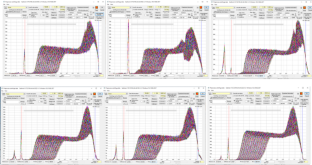The biotech industry has great interest in investigating therapeutic proteins in high concentration environments like human serum. The fluorescence detection system (Aviv-FDS) allows the performance of analytical ultracentrifuge (AUC) sedimentation velocity (SV) experiments in tracer or BOLTS protocols. Here, we compare six pooled human serum samples by AUC SV techniques and demonstrate the potential of this technology for characterizing therapeutic antibodies in serum. Control FDS SV experiments on serum alone reveal a bilirubin–HSA complex whose sedimentation is slowed by solution nonideality and exhibits a Johnston–Ogston (JO) effect due to the presence of high concentrations of IgG. Absorbance SV experiments on diluted serum samples verify the HSA–IgG composition as well as a significant IgM pentamer boundary at 19 s. Alexa-488 labeled Simponi (Golimumab) is used as a tracer to investigate the behavior of a therapeutic monoclonal antibody (mAb) in serum, and the sedimentation behavior of total IgG in serum. Serum dilution experiments allow extrapolation to zero concentration to extract so, while global direct boundary fitting with SEDANAL verifies the utility of a matrix of self- and cross-term phenomenological nonideality coefficients (ks and BM1) and the source of the JO effect. The best fits include weak reversible association (~ 4 × 103 M−1) between Simponi and total human IgG. Secondary mAbs to human IgG and IgM verify the formation of a 10.2 s 1:1 complex with human IgG and a 19 s complex with human IgM pentamers. These results demonstrate that FDS AUC allows a range of approaches for investigating therapeutic antibodies in human serum.



